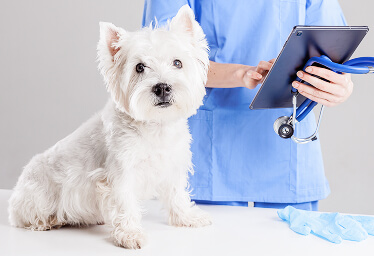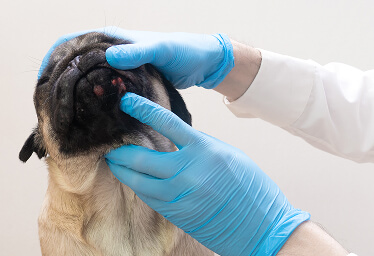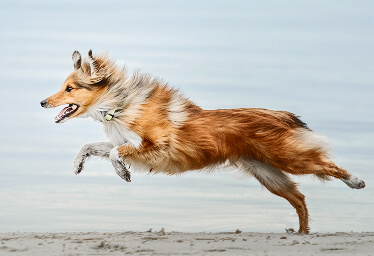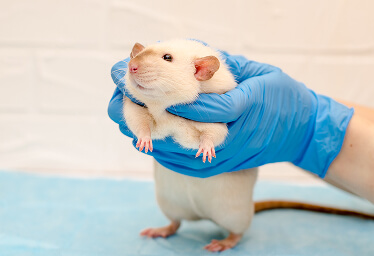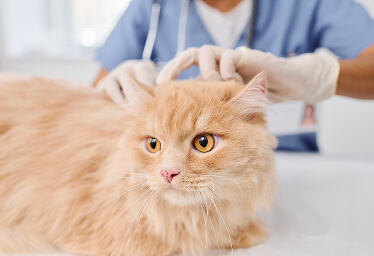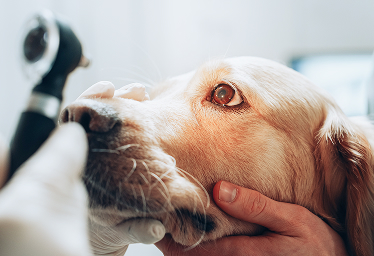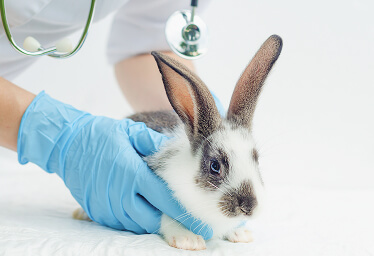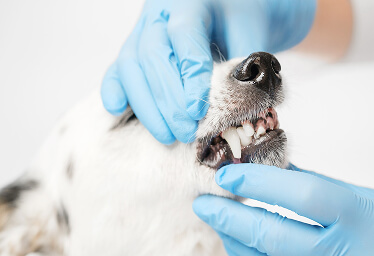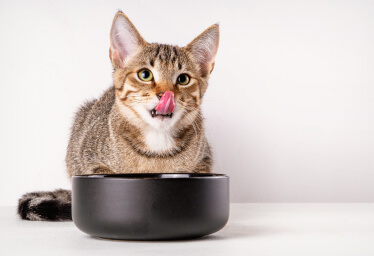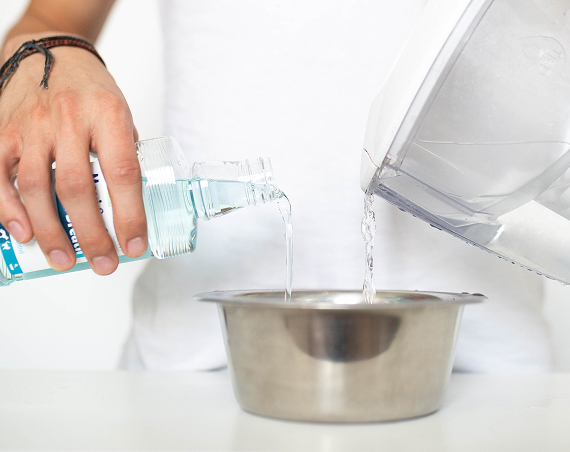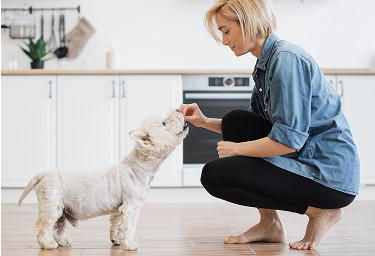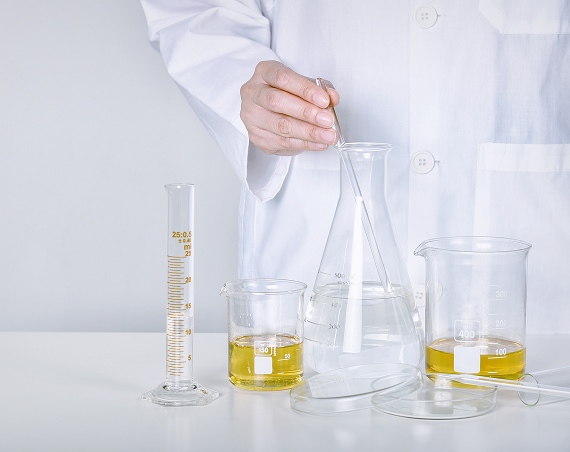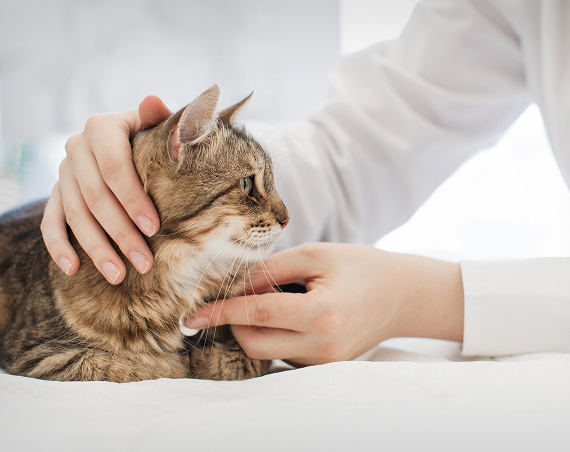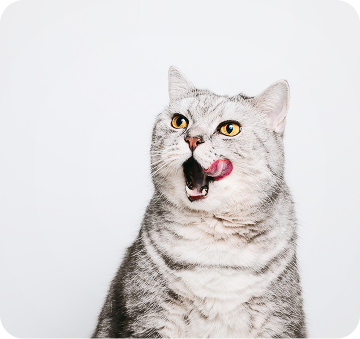The role of the gut microbiota in the health of dogs, cats and other companion animals

Shortcuts
Did you know that your pet’s gut is home to billions of microorganisms that support its health every day? The gut microbiota is an integral part of the body’s proper functioning. Learn about its importance and see what you can do to support it on a daily basis?
Gut microbiota in animals – what is it?
The term gut microbiota refers to the total number of microorganisms that inhabit the digestive tract of animals. They are mainly bacteria, but viruses, fungi and protozoa also reside in it. Although microorganisms remain invisible to the naked eye, their impact on the health of pets is significant.
In dogs, cats and other companion animals, the microbiota performs many important functions, such as aiding digestion, immunity and protection against pathogenic microorganisms. Maintaining its balance is therefore crucial to a pet’s health.
Microbiota vs. microflora
Colloquial language may use the term “microflora,” but in light of modern biological knowledge, the correct term is “microbiota.”
- “Flora” refers to the world of plants (Latin: flora is vegetation), and microorganisms are not plants
- “Biota” means all forms of life in a given environment – and it is this term that is scientifically appropriate in the context of bacteria, fungi, viruses, etc.
For the purposes of this article, we will use these terms interchangeably.
Microbiota vs. microbiome
In the context of the digestive system, it is also worth distinguishing the microbiome from microbiota and microflora. The microbiome is nothing more than the set of genes of the microorganisms that inhabit the digestive tract – their entire genetic record.

How does the gut microbiota develop in animals and what influences its composition?
Animals are born virtually sterile – their digestive tract initially contains no microorganisms. The first bacteria appear in the intestines at birth. In the following days and weeks of life, colostrum and mother’s milk promote the development of beneficial microorganisms that gradually colonize the intestines.
With the introduction of solid foods, the composition of the microbiota changes. New strains of bacteria appear and adapt to the changing diet. This process continues throughout adolescence. In a healthy adult dog or cat, the intestinal microflora reaches relative stability. It is dominated by several groups of bacteria that are responsible for supporting, among other things, digestion, immunity and protection against pathogens.
What affects the composition of the gut microbiota?
The gut microbiota in animals is a dynamic and sensitive ecosystem that can change under the influence of various factors. What in particular affects its composition?
- Diet. This is one of the key factors that modulate the microbiota. Which bacteria dominate your pet’s digestive tract is determined not only by the type of food (commercial, homemade, BARF), but also by the content of fiber, prebiotics and nutrients. A diet that is too monotonous or poor can lead to a decline in microbial diversity.
- Stress. Stressors such as moving, separation from a caregiver, hospitalization or noise – can upset the balance of the microbiota. Chronic stress negatively affects the gut-brain axis and can lead to dysbiosis, or adverse changes in the composition of the gut microbiota.
- Antibiotic therapy. Antibiotics inhibit the growth of not only pathogenic pathogens, but also beneficial bacteria residing in the gut. Their use can reduce the diversity of the microflora and disrupt the natural balance of microorganisms[1].
- Medications. Long-term use of anti-inflammatory drugs (such as NSAIDs) or proton pump inhibitors can have a similar effect to antibiotic therapy. The former can irritate the gastrointestinal tract, increasing the risk of erosions, ulcers and intestinal disorders. The latter, on the other hand, lower the pH of the stomach, which can alter the composition of the microflora and promote colonization of the intestines by unfavorable bacteria.
- Hygienic conditions. Excessive sterility can limit a pet’s exposure to microorganisms. Under natural conditions, they act as immune “trainers.” As a result, the microbiota can be poorer, less stable, and this can increase susceptibility to allergies, infections or digestive disorders.
- Contact with other animals. Interaction between animals promotes the exchange of microorganisms and a greater diversity of microflora.
- Outdoor movement and contact with nature. Having your pet in a natural environment can promote the development of a more diverse microbiota.
[1] E. M Stavroulaki, J S Suchodolski, P G Xenoulis. Effects of antimicrobials on the gastrointestinal microbiota of dogs and cats, https://pubmed.ncbi.nlm.nih.gov/36427604/ accessed 06.06.2025

Learn about our products
Find proven complementary feed, grooming essentials and expert veterinary products. Return to your trusted choices and take care of your pet – with love, knowledge and peace of mind.
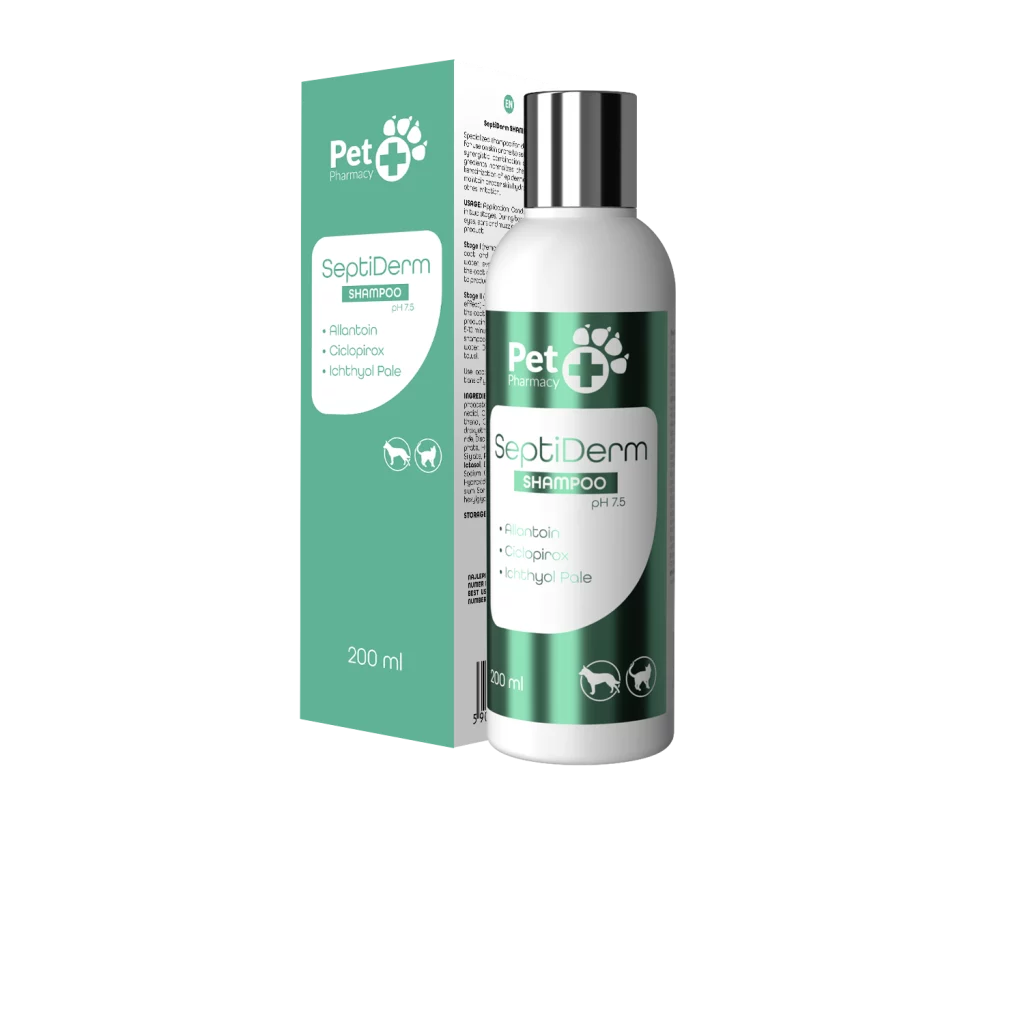
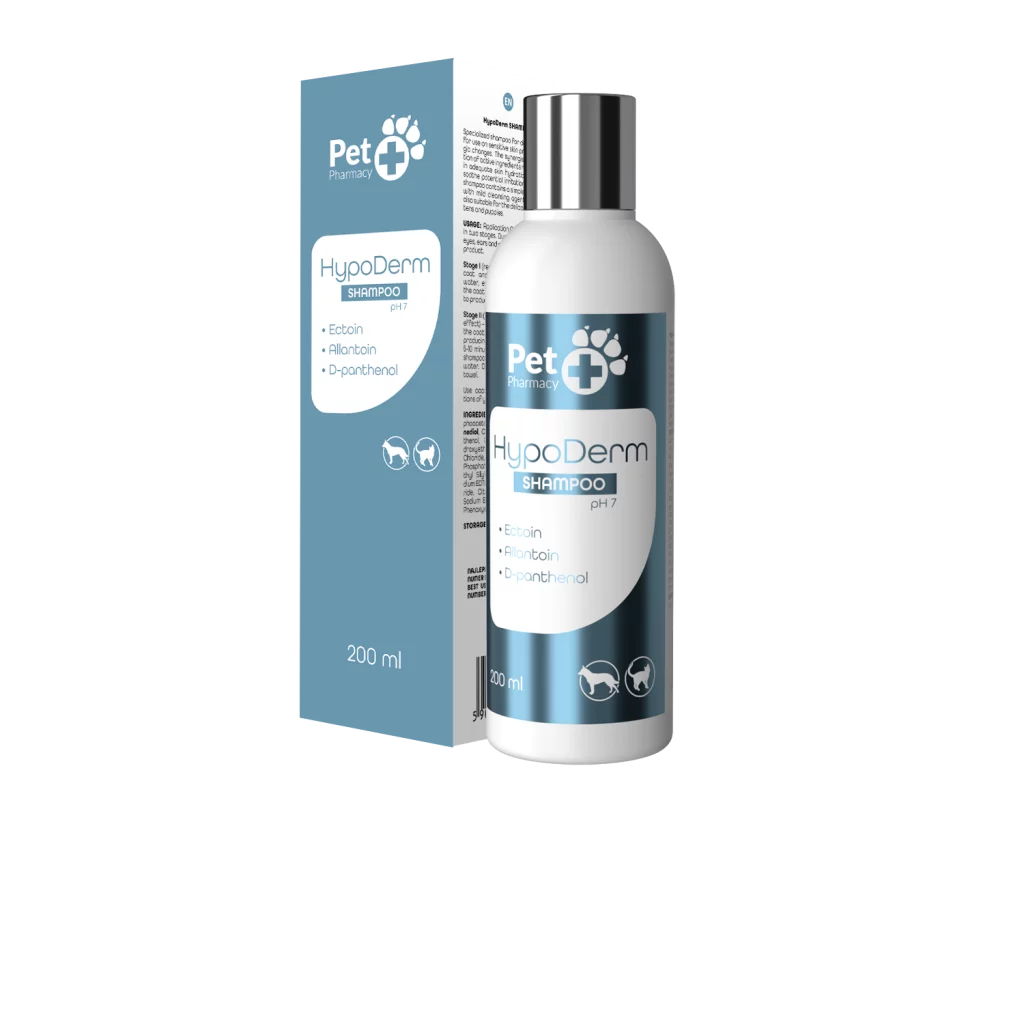
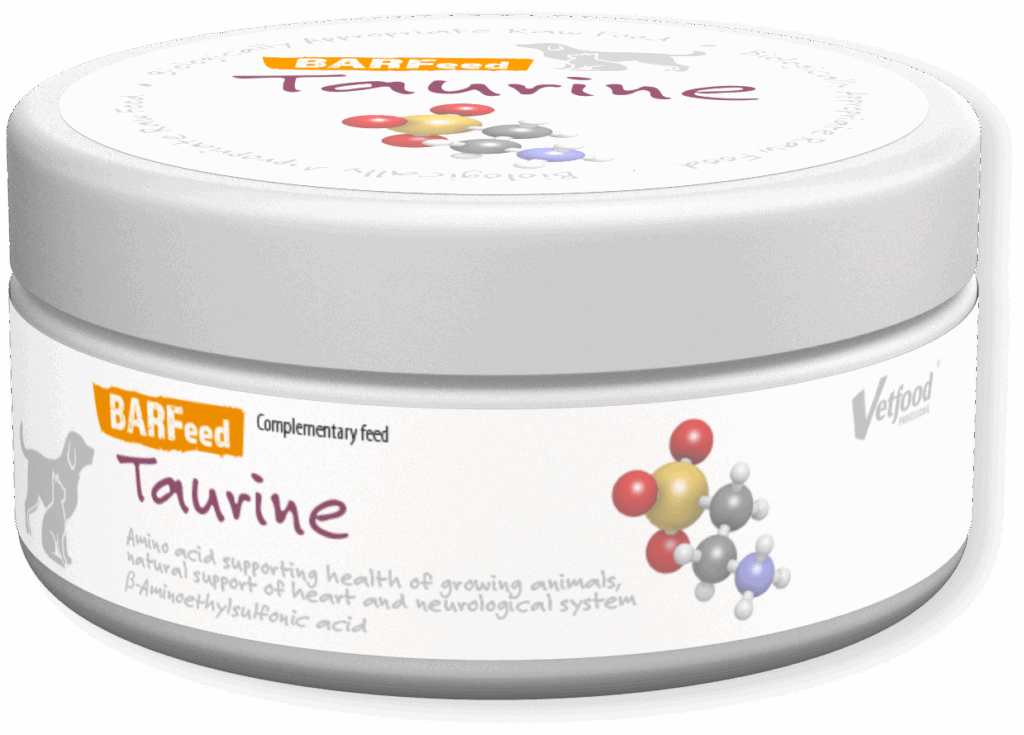

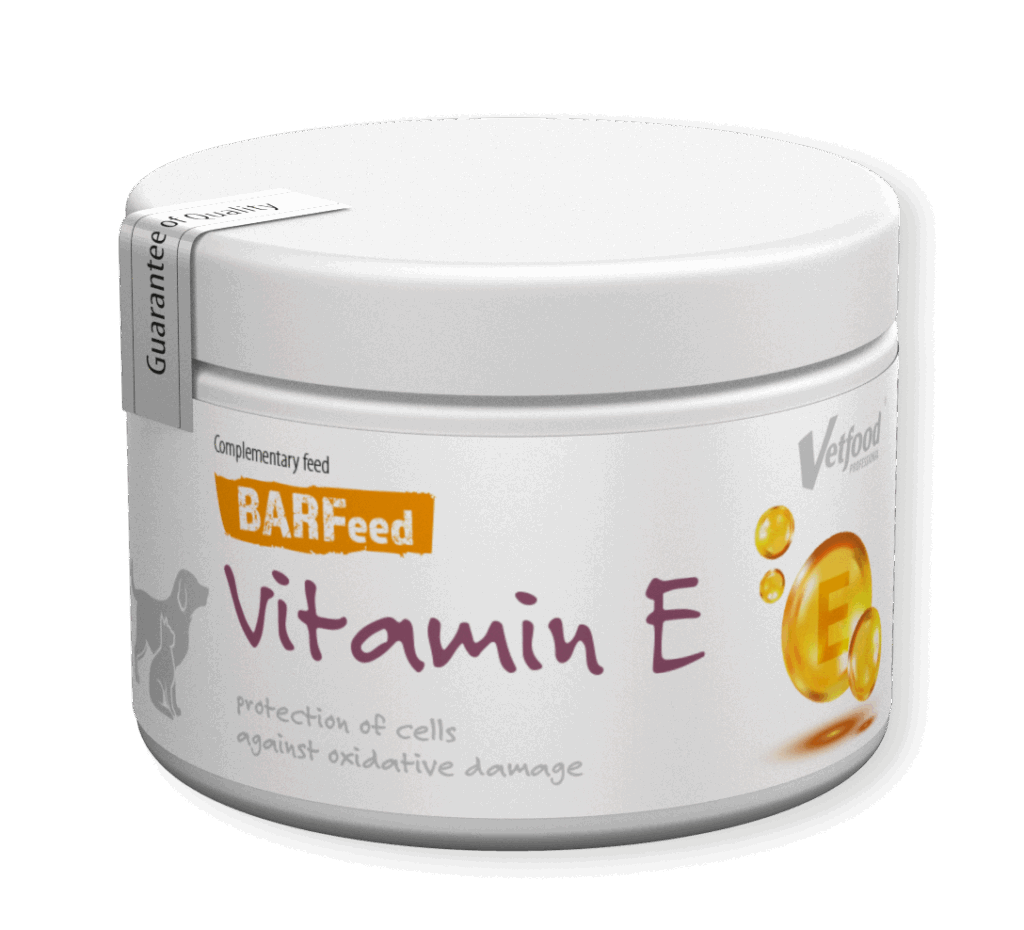
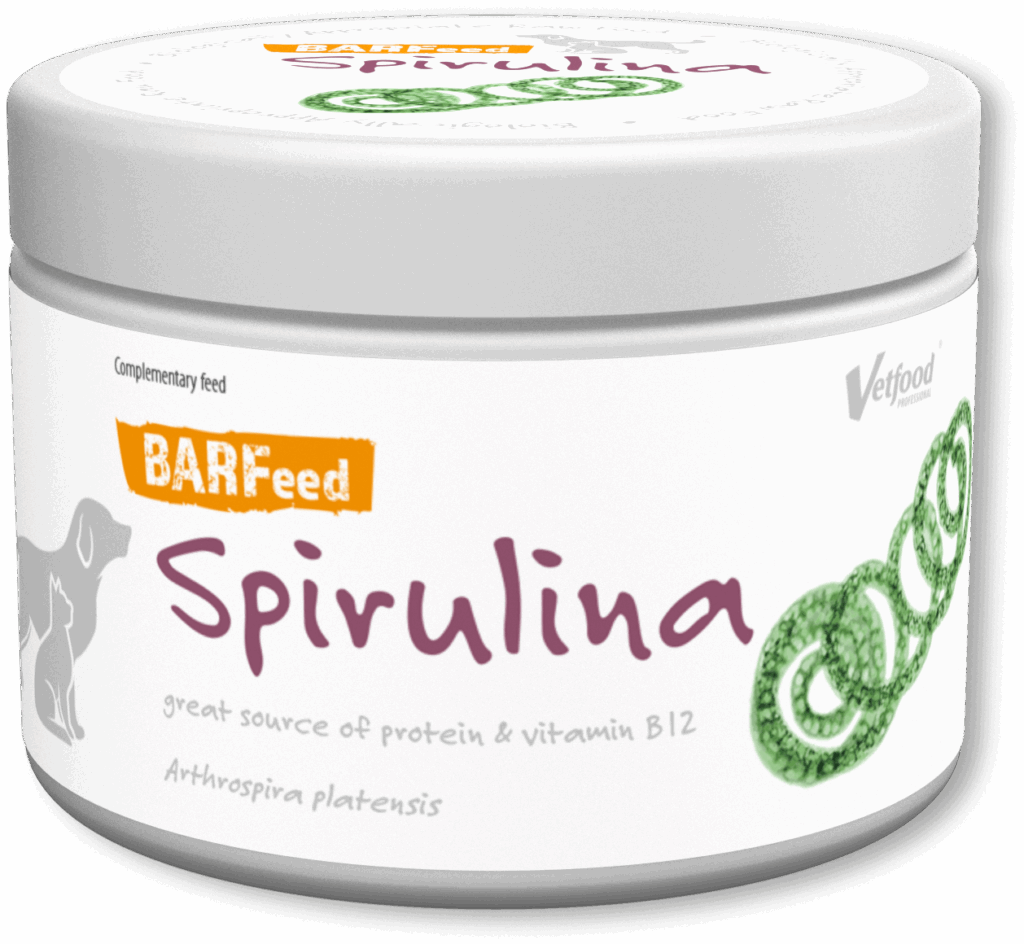
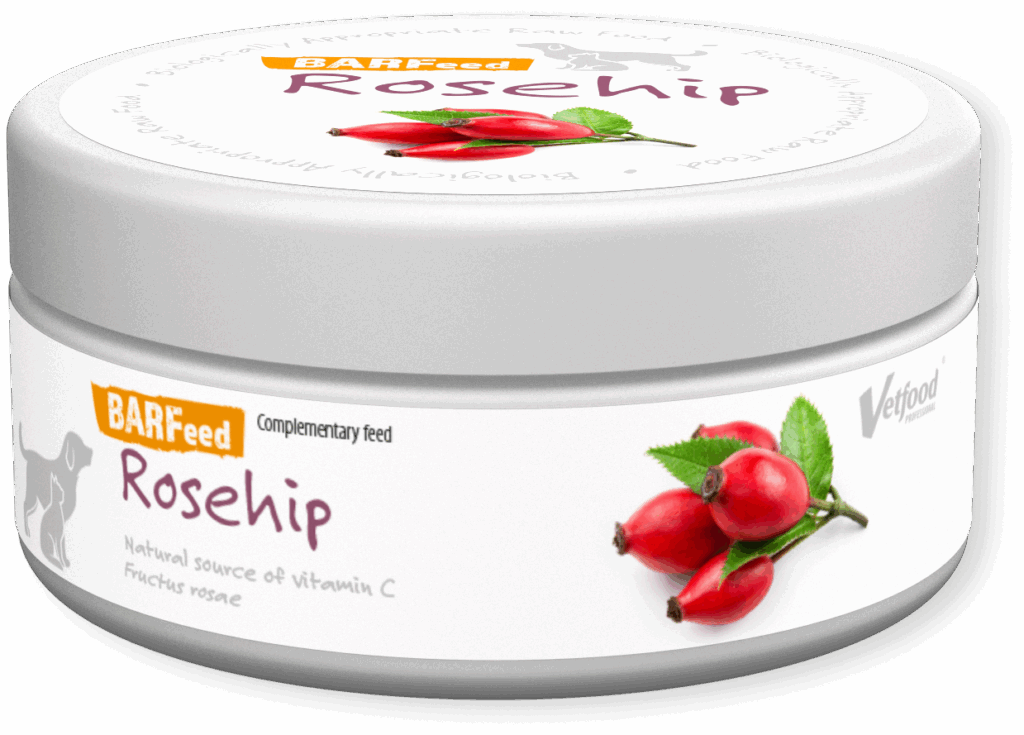
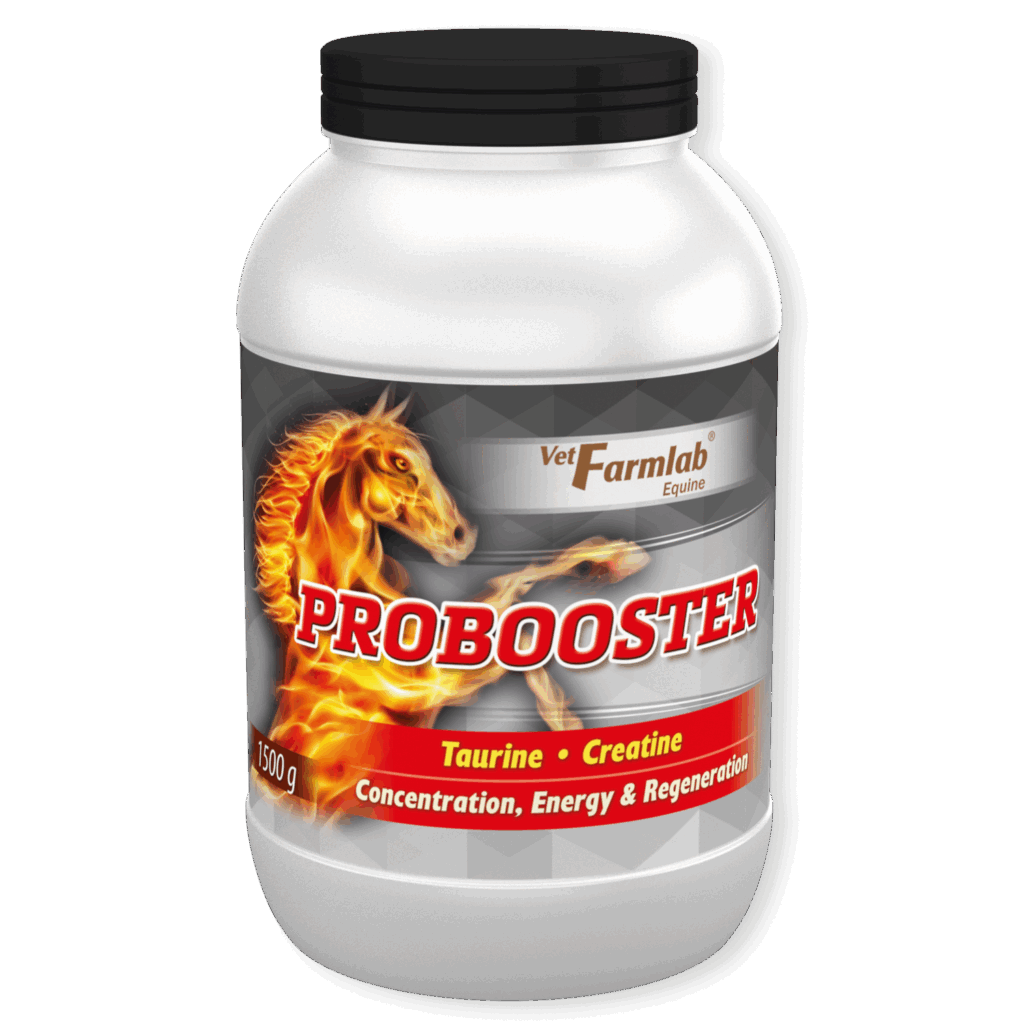
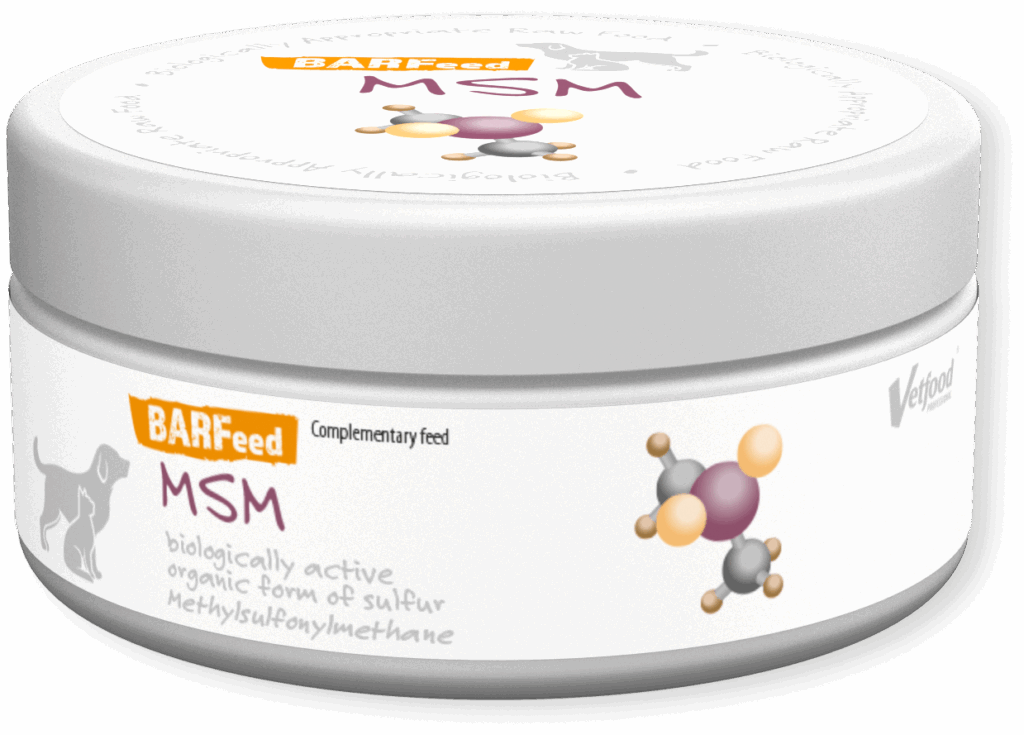
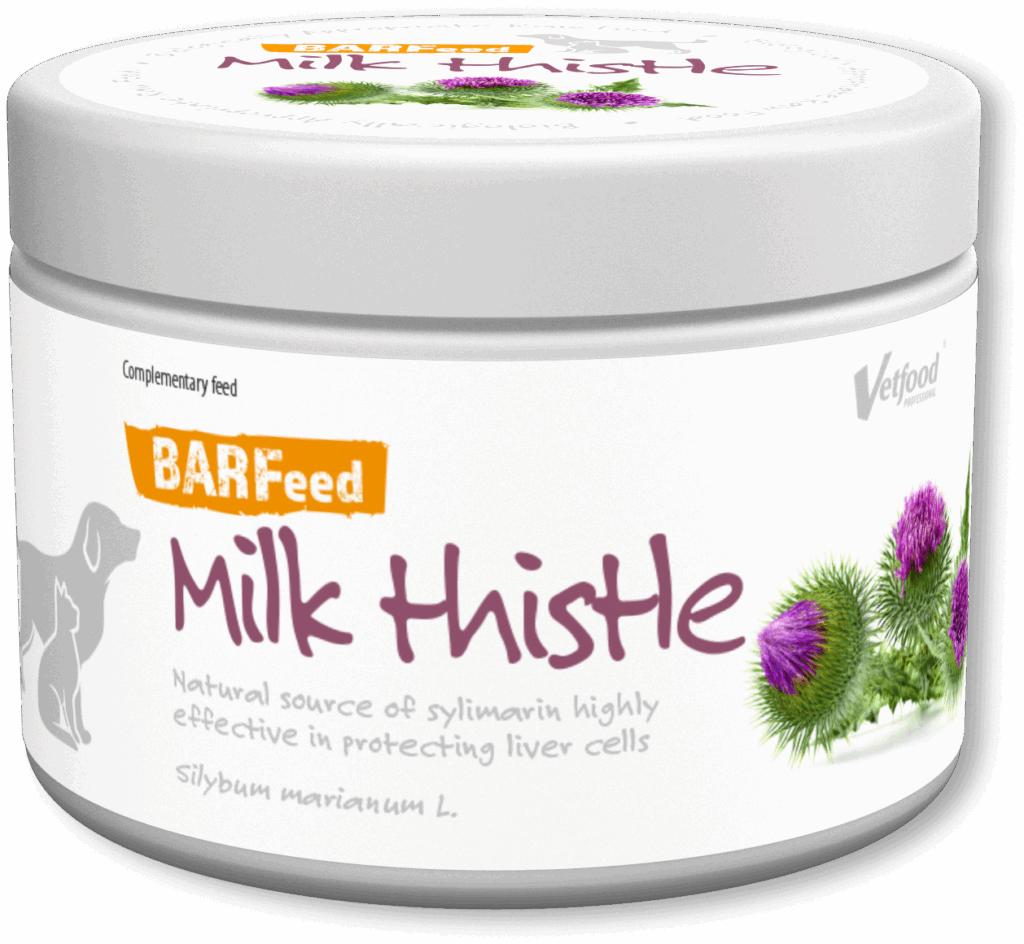
What is the importance of gut microbiota for animal health?
The intestinal microflora is an extremely sensitive and dynamic system – it responds to changes in the environment, lifestyle and diet of the pet. Its composition can be disrupted, but it can also support the balance of the body. That is why it is so important to consciously take care of it. What effect does the gut microbiota have on the animal’s body?
The gut microbiota is much more than a collection of random bacteria in the digestive tract. It forms a complex ecosystem that interacts with the host organism on many levels.
Although for a long time its role was underestimated, today it is known to have a significant impact on the health and well-being of animals – from digestion to immunity to behavior. Proper intestinal microflora is the foundation of the balance of the entire body. What importance does it have for your pet’s body?
- Supporting digestion and absorption of nutrients
The intestinal microbiota helps break down some nutrients that the animal cannot digest on its own – especially dietary fiber and some sugars. This increases the availability of energy and valuable metabolites (such as short-chain fatty acids[1]) that nourish intestinal cells.
- Supporting immunity
The intestines are one of the main immune organs – in animals, about 70% of immune cells are located there[2]. Proper microflora influences the maturation and activity of these cells, supporting the body in the fight against infections. It also serves a “training” function – teaching the immune system which microorganisms are harmless and which require a defensive response.
- Protection against pathogens
Beneficial bacteria compete with pathogenic microorganisms for space and nutrients in the digestive system. They also produce antimicrobial substances that limit the growth of pathogens. This allows the microflora to act as a natural protective barrier.
- Influence on inflammation and chronic diseases
The microbial balance of the gut is important for the level of inflammation in the body. Disruption of the microbiota (known as dysbiosis) can lead to chronic inflammation, which underlies many conditions – including allergies, inflammatory bowel diseases, as well as obesity or even diabetes. - Significance for the nervous system (gut-brain axis)
A growing body of research indicates that the gut microflora affects not only the body, but also the behavior of animals. Through the gut-brain axis, it can affect mood, stress responses and even the development of anxiety disorders[3].
Do you suspect your dog is struggling with separation anxiety? Check here what you can do for your pet? - Regulation of metabolism
The microbiota participates in metabolism, influences fat storage and energy management in the body. Its abnormal composition can contribute to overweight, insulin resistance and metabolic disorders.
[1] J. S. Suchodolski, Companion animals symposium: microbes and gastrointestinal health of dogs and cats, https://pubmed.ncbi.nlm.nih.gov/21075970/, accessed 06.06.2025
[2] G. Vighi, F. Marcucci, L. Sensi, G. Di Cara, F. Frati, Allergy and the gastrointestinal system, https://pubmed.ncbi.nlm.nih.gov/18721321/, accessed 06.06.2025
[3] E. A Mayer, K. Tillisch, A. Gupta. Gut/brain axis and the microbiota, https://pubmed.ncbi.nlm.nih.gov/25689247/, accessed 06.06.2025
A proper gut microbiota supports the functioning of an animal’s entire body-from immunity to digestive processes to behavior. However, its balance can be disrupted by various external factors. So pay attention to any signals that may indicate problems in the gastrointestinal tract. What symptoms should concern you?

Symptoms of intestinal microflora disorders – what can alert you?
The balance of the intestinal microbiota is of paramount importance to an animal’s health. Its disorders – or so-called dysbiosis – can lead to a variety of symptoms that are not always clear-cut and easy to link to the digestive system. So keep a close eye on your pet and react when alarming signals appear.
Symptoms that may suggest an intestinal microflora disorder in a dog or cat include:
- altered stool consistency (diarrhea, constipation, mucus in the stool),
- Gas and bloating,
- Chronic digestive problems (frequent overflow in the abdomen, burping, loss of appetite),
- Itching and skin lesions (allergic reactions, hair loss, dandruff),
- Behavioral disorders (irritability, timidity, decreased activity),
- More frequent infections (such as recurrent ear infections, skin infections or bladder infections),
- Weakening of immunity – the animal “catches” infections more easily, heals less well.
Dysbiosis can also occur without overt gastrointestinal symptoms – in some animals, for example, the signals are limited only to a drop in energy or periodic appetite problems.
This is why it is so important to take a holistic approach to your pet’s condition and regularly consult a specialist. Early recognition of microflora disorders offers the chance to effectively improve the condition through appropriate dietary and veterinary measures.
Remember, if something raises your concerns, do not delay, but go to the veterinarian. The specialist will assess your pet’s health and, if necessary, implement the appropriate treatment.
How to support the natural intestinal microflora in a dog or cat? A mini guide for caregivers
Caring for the natural microbiota is not only a concern for proper digestion, but also for immunity, behavior and overall health of the animal. So in daily care, it’s worth remembering that the microbiota needs diversity, stability and natural support – and the key to this is a conscious approach to nutrition, living environment and preventive health care.
What can you do to support the natural intestinal microflora in your dog or cat?
- Ensure a varied and well-balanced diet
A diet rich in fiber (e.g., vegetables, prebiotics), the right amount of protein and fats, as well as properly selected ingredients to support the bacterial flora, can help maintain the microbial balance in the gut. - Consider using food to supplement your pet’s diet
In some cases, it may be worthwhile to reach forprobiotic, prebiotic, postbiotic and fiber preparations – after consulting a veterinarian or animal nutritionist, of course. These contain ingredients that can support the restoration and diversity of the microflora. - Take care of your pet’s oral and skin health
The balance of microorganisms throughout the body, not just in the gut, affects overall health. Periodontal disease, chronic inflammation or dermatological problems can all be linked to disorders of the microbiome. - Provide daily contact with nature and other animals
Contact with nature and other animals will provide your dog or cat with exposure to a variety of microorganisms that can support the development of healthy intestinal microflora. - Avoid excessive sterility in your pet’s environment
Too sterile an environment can limit contact with natural microorganisms that play a role in the formation of immunity and microbiota. Maintain hygiene, but without overdoing it.
Supporting the natural intestinal microflora is one of the key elements of taking care of your pet’s daily health. A proper diet, contact with nature, attention to hygiene and a sensible approach to prevention can make a real difference in the diversity and stability of the microbiota. In some situations, however, the daily diet may require additional support. When is it then worth considering reaching for a complementary food?
Supplemental food in a pet’s diet vs. microbiota – when can it be introduced?
Although a properly balanced diet should cover your dog’s or cat’s nutritional needs, in some situations you may want to consider supplemental foods that support the intestinal microflora. Such products contain ingredients – such as prebiotics, probiotics, fiber or substances with a protective effect – and are designed to supplement daily meals.
Supplemental feeding can be helpful when:
- The animal has undergone antibiotic therapy or other treatment affecting the microbial balance,
- the pet develops chronic digestive disorders, such as diarrhea, bloating, irregular bowel movements,
- the dog or cat’s diet is homogeneous or poor in natural sources of fiber and prebiotics,
- the animal is in a period of increased stress – such as after a move, during a holiday separation, in a shelter or after surgery;
- You want to take care of microbiota diversity prophylactically, especially for older, sensitive or sick animals.
The introduction of complementary foods is best consulted with a veterinarian or animal nutritionist – especially if your pet has special dietary needs or health problems.
Such products should be well matched to your pet’s dietary style (e.g. BARF, cooked, commercial foods) and used according to the manufacturer’s recommendations. Thus, they can realistically support the microflora and improve your pet’s digestive comfort.
The role of the gut microbiota – summary
The gut microbiotaplays a key role in maintaining the health of dogs, cats and other companion animals. It supports digestion, boosts immunity, protects against pathogens and influences a pet’s overall well-being.
However, its balance can easily be disrupted by diet, stress or antibiotics – so it is worth consciously supporting the microflora through proper nutrition, contact with nature and a healthy lifestyle.
In some cases, a well-chosen complementary food can be a valuable support for the daily care of the gut microbiota and comfort of the animal. Remember, however, that this should be done under the supervision of a specialist.
The text is for informational purposes and does not replace the advice of a veterinarian.
